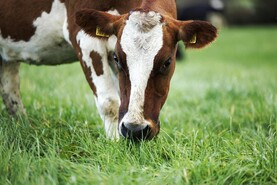When you think of agriculture in the Netherlands, the first thing that springs to mind is the dykes. Approximately two thirds of the agricultural land area of the Netherland is low, or below sea level, and is susceptible to flooding.
A series of dykes, dams and floodgates control the water level within the country. This has allowed vast areas of land to be reclaimed. Agriculture plays a strong role in the country and in the early 2000s, it was estimated that the agricultural labour force was slightly over 250,000 people.
Figures from Eurotstat, the European Commission’s statistics body, show that there were approximately 76,700 agricultural holdings in the Netherlands in 2007. This was an increase of approximately 6% since 2005. The average farm size is 24ha.
Dairy centre stage
Table 1 lists stock numbers in the Netherlands by animal type. There are almost 6.5m head of bovines in the country, with 1.5m of these dairy cows.
Dairying is one of the most important agricultural industries in the country. It is estimated that almost 60% of the agricultural land in the Netherlands is used by the dairy sector.
Dairy output value accounts for 15% to 20% of the total agricultural output value. the Netherlands is one of the world’s largest dairy exporters.
12million kilos of milk are produced annually and products such as cheese, butter, powdered milk and fresh milk products are exported. The value of dairy exports from the Netherlands is estimated to be close to $6.5bn. It is home to one of the largest milk processing cooperatives in the world – Friesland Campina.
Less than half of the cattle in the Netherlands are grazed. In recent years there has been more emphasis on grazing stock, particularly dairy herds.
Where a dairy herd has access to grass for over 120 days per year, a top-up of 0.5c/l is paid on the entire yearly milk supply at the year end. Farmers now look at this not only as a financial incentive but as a method of reducing costs in dairy herds. Due to the high level of indoor feeding, milk production costs in the Netherlands are generally high. So too are fixed costs and debt levels on dairy farms.
Beef production
Suckler herds are a minority in the Netherlands. Most of the beef produced comes from the dairy herd and the majority is slaughtered as veal. In 2011, over 80% of beef production in the Netherlands was veal. In 2010, over 230,000 tonnes of veal were produced in the Netherlands. This is generally produced as Rose veal or white veal.
Poultry
The poultry sector is a strong one also. In 2011 over 960,000 tons of poultry meat was exported from the Netherlands. In 2010 the laying hen population hit 33.7m birds on 1,126 farms. The Dutch product Boards estimate that 9.8bn table eggs were produced in the country in 2010.
Organic
It is not only poultry production that has seen growth in recent years, organic production has been met with an increase also.
A government initiated task force is currently aiming to increase the consumption of organic products by 10% per year.
Land Use
The total agricultural area of the Netherlands is approximately 1.9m hectares. Of this, approximately 55% to 57%, or one million hectares, is grassland. The remainder is tillage and fallow land. Soil structure in most cases denotes whether the ground is suitable for tillage or not.
There is a wide range of crops grown in the country. Table 3 lists the various crops grown in hectares. Cereals and root crops account for nearly half of all tillage in the Netherlands.
In total, 222,500ha of cereals are grown annually, and a further 240,000ha of root crops. Root crops are broken down into 157,000ha of potatoes, and 82,300ha of beet. Vegetables are the next largest crop grown, accounting for 83,000ha per annum. The country is well renowned for bulb growing. 32,800ha of the total cropped area is flowers and plants, while a further 10,600ha are used for industrial crops such as tobacco, hops, cotton, sunflowers and soya.
Farm size and age of holders
Table 2 and figure 1 show the average farm unit size and the age of farm holders. In 2007, the average dairy farm size was 59.9 cows, similar to that in Ireland.
The stand-out figures are the average size of the pig and poultry units. Pig finishing units had on average 1,340 head, while the average broiler unit consisted of over 57,000 birds. The average number of layer hens per farm in 2007 was 25,000.
Figure 1 shows the age profile of farm holders in the Netherlands. Just 5.4% of farm holders are women, while only 59% of the agricultural area was farmed by its owners in 2007. Land rental and leases are much more commonplace in the Netherlands compared with Ireland.
However, the Netherlands too has an ageing farming population. 44% of farmers in the country were over 55. These figures are quite similar to those seen here at home.






 This is a subscriber-only article
This is a subscriber-only article














SHARING OPTIONS: